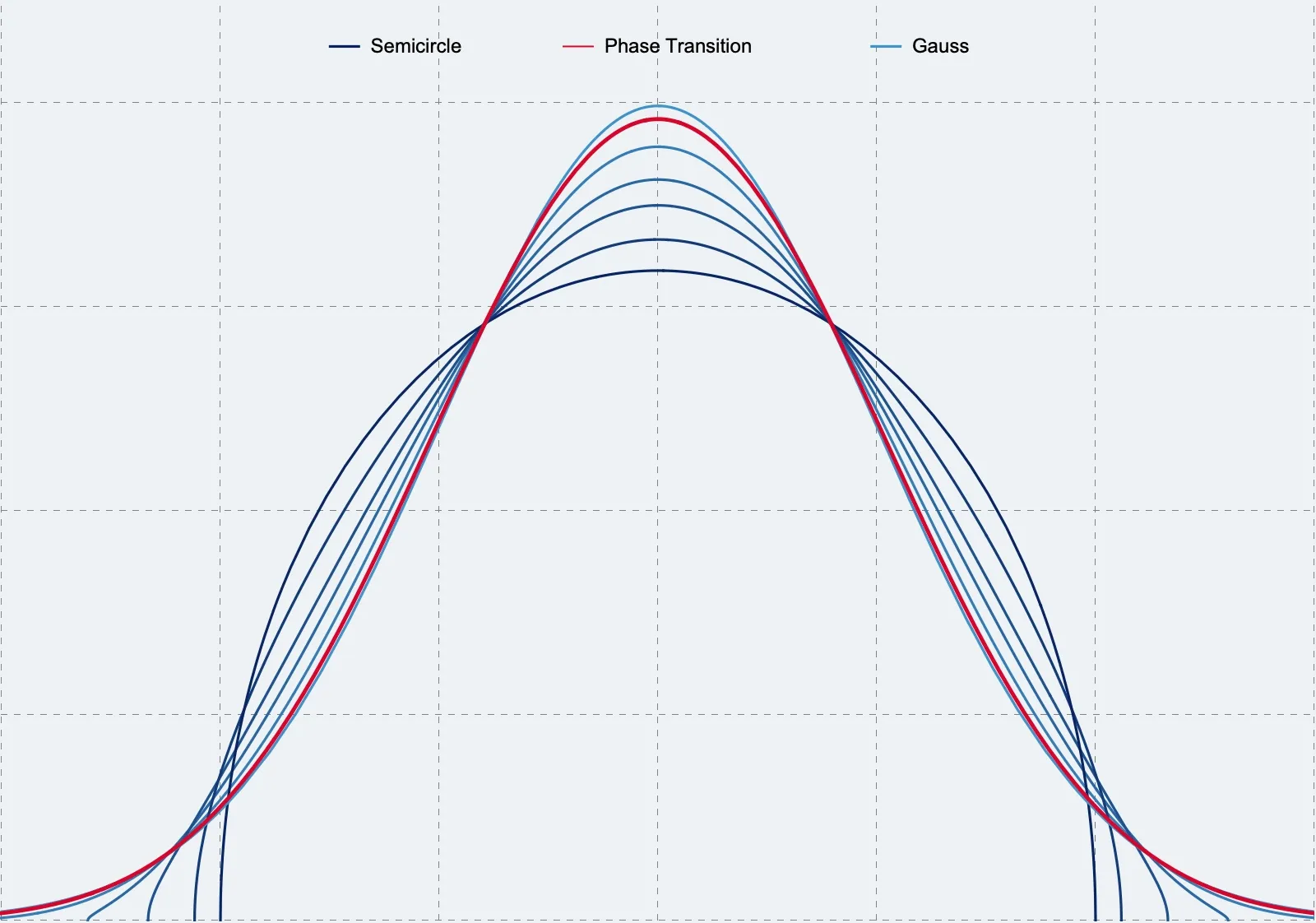Phase Transition in the Density of States of Quantum Spin Glasses
László Erdős, Dominik Schröder
Math. Phys. Anal. Geom.Vol. 17 (2014) | Issue 3-4
Summary
We demonstrate a transition between Gaussian and semicircular laws using q-Hermite polynomials. This work has inspired large amounts of follow-up research on the SYK model for quantum gravity.
The density of states
interpolates between the Gaussian and semicircular densities
Abstract
We prove that the empirical density of states of quantum spin glasses on arbitrary graphs converges to a normal distribution as long as the maximal degree is negligible compared with the total number of edges. This extends the recent results of Keating et al. (2014) that were proved for graphs with bounded chromatic number and with symmetric coupling distribution. Furthermore, we generalise the result to arbitrary hypergraphs. We test the optimality of our condition on the maximal degree for -uniform hypergraphs that correspond to -spin glass Hamiltonians acting on distinguishable spin-1/2 particles. At the critical threshold we find a sharp classical-quantum phase transition between the normal distribution and the Wigner semicircle law. The former is characteristic to classical systems with commuting variables, while the latter is a signature of noncommutative random matrix theory.
